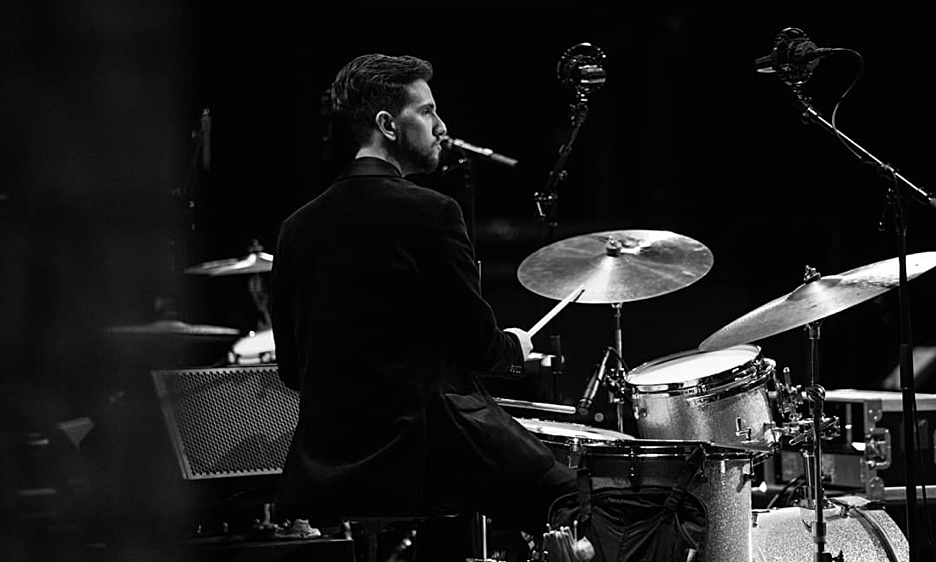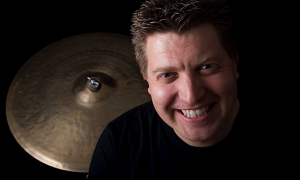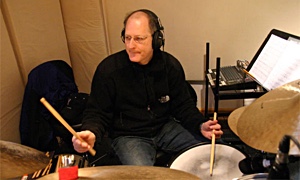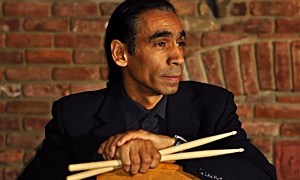Home » Jazz Articles » Rhythm In Every Guise » Evan Sherman: Not Just A Throwback
Evan Sherman: Not Just A Throwback

Courtesy Evan Sherman website
Sherman has progressed way beyond copping licks and key pieces of vocabulary. There's a foundation and genuine sense of order in his drumming; there's never any question of where the beat lies and, conversely, time doesn't turn stiff or plodding. He swings in a manner that contains equal parts of fluidity and tension, and there's an absence of anything that sounds forced or frenetic. Like his esteemed predecessors, Sherman conveys an attitude that lifts a band instead of merely imposing his will. The excitement he generates isn't strained, anxious, or unmindful of the music as a whole.
These characteristics are offered in spades during the eight tracks of Sidewalkin' and were apparent throughout the seven-selection set in Madison. For those who don't have the opportunity to experience him in a club or concert hall, the record serves as an ideal introduction to all the things Sherman does well at this juncture in his development. Everything begins with a major component of Sherman's individualism: his touch. It is obvious that he has put a lot of thought into articulating every stroke in a clean, well-defined manner, regardless of the tempo or the dynamic level. The measured way he strikes the drums and cymbals isn't always conspicuous; nonetheless, even during periods of low dynamic levels, attentive listening is constantly rewarded.
Equally satisfying is the tuning of each drum in concert with the others (something that is particularly noticeable when he moves between the two tom—toms during breaks and solos), and his selection of ride and hi-hat cymbals with the overall sound of the kit in mind. First among equals, the pithy snap of Sherman's snare drum contains just the right amount of body and depth. (Kudos for recording engineer Maureen Sickler for capturing it.) It cuts through the other instruments on the record, yet isn't too weighty and doesn't project too much.
From the start to finish of every track on Sidewalkin', Sherman animates all aspects of the music—in other words, there's something noteworthy at every turn. (The same can be said of the seven selections that comprised the live set in Madison.) He fashions crisp, unaccompanied introductions which set up the band's entry on Charlie Parker's "Chasin' The Bird," Sam Jones' "One For Amos," Horace Silver's "Quicksliver," Anthony Wonsey's "The Sherman Stroll" and Dizzy Gillespie's "Ow!" Sherman fleshes out the heads of "Chasin' The Bird," "Quicksilver," and "Ow!" with smart, imaginative—and sometimes daring—rhythms that enhance the compositions. In particular, the terse, multiple stroke figures he jams into "Ow!" (the set closer for the record and Madison performance) are stunning yet refrain from taking up too much space or sullying the music's character.
There are numerous examples of his spirited support of and interaction with the soloists. A couple of favorites include his replicating and extending a repetitive line by tenor saxophonist Jerry Weldon on "Chasin' The Bird," and a variety of snare accents—by turns understated and chatty—at varying dynamic levels amid trumpeter Joe Magnarelli's muted turn on "One For Amos." In direct contrast to the more subtle aspects of his accompaniment, during the Madison concert, a protracted barrage of heavily accented strokes fueled a portion of Weldon's solo during Charlie Parker's "Now's The Time."
Not unlike his intros, each of Sherman's breaks and solos has a unique character of its own. They never overstay their welcome or stray from the essence of the music. Check out his articulate, rousing statements on "Chasin' The Bird" and "The Sherman Stroll." During the concert in Madison his 12-bar trades with the band on "Now's The Time" displayed the range and depth of his vocabulary. (Jerry Weldon did some nifty dance steps to a particularly swinging break.) For an extended solo during Freddie Hubbard's "Up Jumped Spring," he utilized shells, rims as well as more conventional surfaces; regardless of how dense and complex Sherman's playing became, there was always something ear-catching, a recognizable pattern of strokes to hang onto.
One of the pleasures of jazz fandom is monitoring the progress of young musicians as closely as possible over a protracted period. Listening carefully to their recordings and, when the opportunity arises, checking out live performances allows us to hear jazzmen and women adapt to various playing situations, attain recognizable voices as ensemble players and soloists and perhaps even find success as bandleaders. While there is certainly a lot of great music that competes for our attention, Evan Sherman's efforts as a drummer and musical thinker are worthy of more than casual attention over the long haul. In a time when a veritable flood of influences from around the globe are affecting jazz in myriad ways, it will be interesting to see if he continues to find inspiration in the bebop tradition, and how his drumming and take on the music evolves in the years ahead.
Tags
Rhythm In Every Guise
Evan Sherman
David A. Orthmann
United States
New Jersey
Newark
Max Roach
Art Blakey
Philly Joe Jones
Charlie Parker
Sam Jones
Horace Silver
Anthony Wonsey
Dizzy Gillespie
Jerry Weldon
Joe Magnarelli
PREVIOUS / NEXT
Evan Sherman Concerts
Support All About Jazz
 All About Jazz has been a pillar of jazz since 1995, championing it as an art form and, more importantly, supporting the musicians who make it. Our enduring commitment has made "AAJ" one of the most culturally important websites of its kind, read by hundreds of thousands of fans, musicians and industry figures every month.
All About Jazz has been a pillar of jazz since 1995, championing it as an art form and, more importantly, supporting the musicians who make it. Our enduring commitment has made "AAJ" one of the most culturally important websites of its kind, read by hundreds of thousands of fans, musicians and industry figures every month.
























